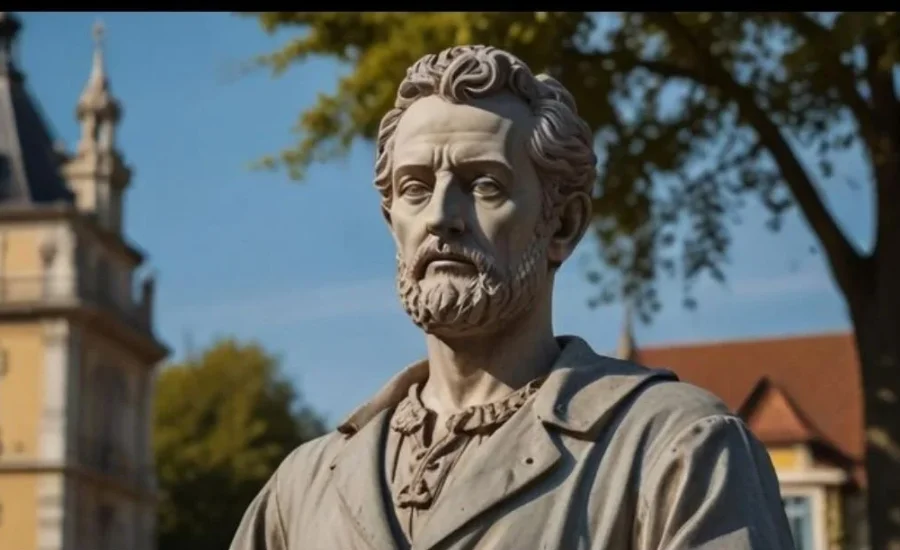
Conrad Peutinger II 1475 is a remarkable piece of history that gives us a glimpse into the world of ancient maps. This unique artifact was created by the famous cartographer, Conrad Peutinger, who was known for his amazing skills in mapping. The year 1475 is important because it shows the time when maps were becoming more accurate and detailed. Understanding this map helps us learn about how people traveled and understood their world long ago.
The Conrad Peutinger II 1475 is not just a map; it is a storybook of places, routes, and important locations. It reflects how people thought about geography during the 15th century. By studying this map, we can see how travel and exploration were important to society at that time. It also helps us appreciate the art of cartography and how it has evolved over the years.
The Importance of Conrad Peutinger II 1475 in Cartography
Conrad Peutinger II 1475 is a significant map in the world of cartography. Created by the skilled mapmaker Conrad Peutinger, it represents the understanding of geography in the 15th century. This map is special because it shows how people viewed their world long ago. At that time, maps were not just tools for navigation; they were also works of art that displayed information about different regions.
Maps like Conrad Peutinger II 1475 helped travelers find their way. They also shared knowledge about trade routes and important cities. The details on the map reflect the connections between different places, showing how people traveled for trade, exploration, and communication. This map played a crucial role in shaping our understanding of geography today.
Another reason this map is important is that it shows the influence of the Renaissance. During this period, people began to study ancient texts and improve their knowledge of the world. Conrad Peutinger II 1475 captures this spirit of discovery and learning, making it an important historical document.
What Makes the Conrad Peutinger II 1475 Special?
The Conrad Peutinger II 1475 is special for several reasons. First, it is one of the earliest examples of a detailed map. Unlike earlier maps that were often simple and unclear, this map features accurate depictions of land, rivers, and cities. This accuracy made it a valuable resource for travelers and scholars of that time.
- Artistic Design: The map is beautifully designed, showcasing the artistry of the time. The colors and illustrations are eye-catching and help to make the map visually appealing. This artistic touch makes it not only a practical tool but also a piece of art.
- Historical Insights: The map provides insights into the historical context of the 15th century. By studying it, historians can learn about trade routes, political boundaries, and cultural connections between different regions. This information helps us understand how people interacted with each other during that time.
- Educational Tool: The Conrad Peutinger II 1475 serves as an educational tool for students and anyone interested in history. It can be used to teach lessons about geography, history, and the evolution of map-making techniques. The map helps bring history to life for younger generations.
Exploring the Features of the Map
The features of the Conrad Peutinger II 1475 map are fascinating. One of the most notable aspects is its use of symbols and colors to represent different places. Each symbol tells a story about what is found in that area, whether it is a city, a river, or a mountain.
Key Features of the Map:
- Detailed Illustrations: The map includes detailed illustrations of cities and important landmarks. This artistic approach helps viewers imagine what these places looked like during the 15th century.
- Trade Routes: Another important feature is the depiction of trade routes. These routes highlight how goods and services traveled from one place to another. Understanding these routes helps us see the connections between different regions.
- Geographical Accuracy: The accuracy of the map’s geographical information is impressive. It shows how much knowledge people had about their world at that time. This accuracy laid the groundwork for future mapmakers to improve and refine their work.
How the Conrad Peutinger II 1475 Influenced Navigation
The Conrad Peutinger II 1475 had a significant impact on navigation. At a time when sea travel was becoming more common, this map provided important information for sailors and traders. By showing land masses and coastlines, it helped navigators find their way to new destinations.
Importance of the Map in Navigation:
- Guidance for Sailors: Sailors used the map as a guide to navigate through unknown waters. The map’s accurate representation of coastlines helped prevent ships from getting lost at sea.
- Facilitating Trade: The map played a key role in facilitating trade between different regions. It allowed traders to plan their journeys and understand where to find goods and markets. This was essential for the economy at that time.
- Promoting Exploration: The information provided by the map encouraged further exploration. It inspired explorers to venture into new territories, leading to the discovery of new lands and resources.
Conclusion: The Legacy of Conrad Peutinger II 147
The legacy of Conrad Peutinger II 1475 continues to influence how we understand maps today. Its artistic design, historical significance, and impact on navigation make it a valuable piece of our past. By studying this map, we can appreciate the journey of cartography and how it has evolved over the years.
Conrad Peutinger II is more than just a map; it is a window into a different time. It helps us see how people understood their world and navigated through it. As we explore maps like this one, we can learn important lessons about history, geography, and the art of cartography.







